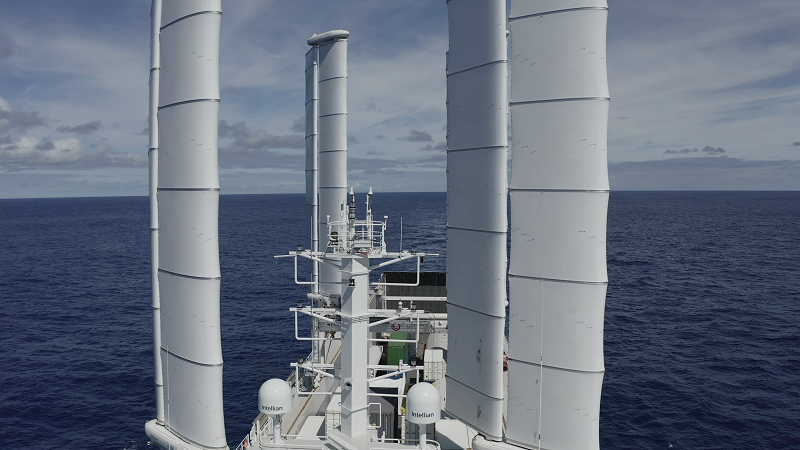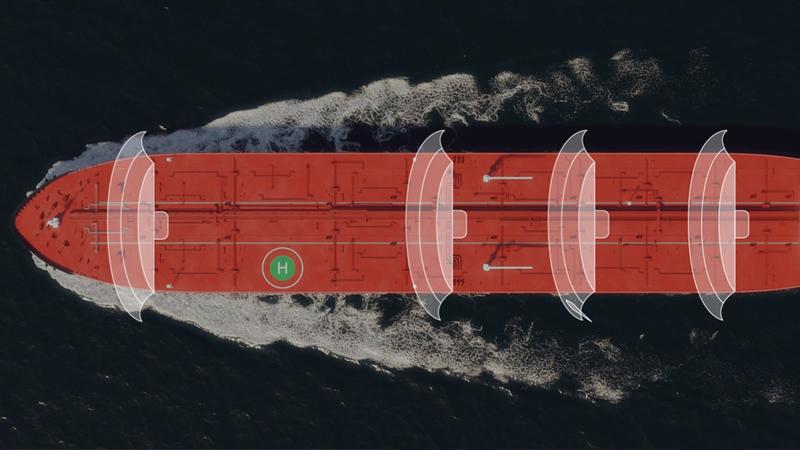Expert insights: Maximizing wind-assisted ship performance verification with wind lidar
Interview with Jakob von Eisenhart Rothe, Project Engineer Lidar & Power Performance, DNV and Jan Wienke, Approval Engineer, DNV
Could you tell a bit about your background and experience with wind lidars and power performance at DNV?
Jakob: I’ve been working as a Project Engineer for Nacelle LiDAR and Power Performance Testing at DNV since 2021. Before that, I was a sailor and marine engineer – so testing WAPS with Nacelle LiDAR is a great opportunity to combine the skills from both my past and present professions.
Jan: I’ve been with DNV (and formerly GL) since 2002, conducting over 100 speed trials during that time. For wind measurements, I typically use a battery-powered ultrasonic sensor, mounted on the top of the light mast at the bow, with a wireless connection to the bridge. This setup outperforms the commonly used fixed cup-type anemometers which are usually applied for speed trials. I have also contributed as a member of the expert group behind ISO 15016:2015 and the new 2025 revision.
Can you give us an overview of why accurate wind measurements are critical for wind-assisted propulsion systems (WAPS) sea trials and performance testing?
Jakob: If you truly want to understand how much propulsion you’re getting from your WAPS, accurate wind measurements are a must have.
Jan:
- Sea trials: Traditional sea trial tests are usually conducted in calm weather conditions, with results adjusted to no-wind, no-wave scenarios. For WAPS, trials must be performed in windy conditions - making wind measurement accuracy far more critical than in standard speed trials performed according to ISO 15016:2015/2025.
Performance measurements: In conventional performance monitoring, wind measurement data is mainly used for filtering or wind corrections. But when WAPS are installed, wind contributes directly to thrust, so accurate wind measurements are essential to reliably assess performance.
What are the key challenges in measuring wind on ships using traditional methods like anemometers?
Jakob: Wind energy standards for wind measurement are strict about anemometer placement in relation to your wind turbine, because nearby structures or objects - especially large ones - distort wind flow. A ship, being a large structure itself, makes it nearly impossible to position an anemometer far enough to avoid wind flow obstruction. That’s why remote sensing is essential and why LiDAR is the only way to get accurate wind measurements at sea.
Jan: Wind flow around the ship’s structure and deckhouse affects wind measurements taken atop the wheelhouse – which varies with wind direction and the ship’s loading condition. With WAPS installed, this disturbance becomes even more significant.
What are the key advantages of remote wind measurement using lidar?
Jakob: The key advantage of LiDAR is its flexibility. You can choose the direction and distance of wind measurements, and even measure at multiple heights and ranges simultaneously, providing a more complete picture of the wind field.
How does lidar technology ensure a more reliable verification of wind-assisted propulsion efficiency compared to anemometers?
Jakob: As mentioned above, it's not possible to obtain same accuracy for wind measurements on a ship using an anemometer. If you want best accuracy, you should apply LiDAR.
Jan: Efficiency analysis requires evaluating performance from two angles: calculating thrust from the measured wind speed, which needs accurate wind measurement, and assessing propulsion power savings by comparing different sail configurations (e.g., if a rotor sail is turning or stopped). Detecting the performance differences between conditions requires greater accuracy than making an absolute determination of a single condition, making accurate wind measurement data even more critical than in standard ISO 15016:2015/2025 speed trials. LiDAR offers a practical solution to achieve this accuracy.
Can you explain how lidar’s ability to measure undisturbed wind data enhances WAPS performance analysis?
Jan: Thrust from the sails is calculated using measured wind data and a sail system force matrix provided by the sail manufacturer, which is based on wind tunnel tests or CFD calculations, accounting for interactions between sails and the ship’s superstructure. Only with accurate wind values, can this force matrix be validated or calibrated by on board sea trials. Improving the accuracy of the force matrix allows for better performance prediction, which is an important part assessing the economic benefit of a WAPS system.
Today, wind lidars are primarily used to improve the accuracy of wind impact measurements during sea trials. Do you have an estimated value for how inaccuracies in wind measurement (speed and direction) could affect the efficiency of a wind propulsion system?
Jan: That depends strongly on the type of sail system. For active sail systems, which include rotor sails and ventilated suction sails, optimizing rotor or fan speed can significantly increase thrust, but this requires accurate wind data. For passive sails the effect is less and here it is mainly the sail angle which can be adjusted or optimized, but even then, better wind measurements can lead to better performance of a WAPS system not only in a sea-trial but in actual operation.
The next step beyond optimization of the sail system is route optimization. While this relies on weather forecast data, accurate onboard wind measurements are essential for aligning real-time conditions with predictions to help make the right decisions.
How does the revised ISO 15016:2025 impact wind measurement standards for speed and power trials, and what role does wind lidar play in this context?
Jan: The new revision of the ISO 15016 sets stricter limits for maximum acceptable wind speeds and recommends using advanced sensors like ultrasonic anemometers or LiDAR systems. These allow for higher maximum wind speed values during sea trials, offering shipyards more flexibility.
However, this alone is unlikely to drive change. Shipyards will likely stick to familiar cup-type anemometers unless pushed by shipowners, especially since the benefits for standard speed trials are limited. Trials conducted in calm weather conditions improve accuracy more than even the most precise wind measurements, as wind is only used for correction of the results.
Sea trials involving WAPS are a different case. Here, accurate wind data directly impacts performance assessment. For this reason, LiDAR is expected to become standard for WAPS-related sea trials.
How do you see the future role of wind lidar in enhancing energy efficiency and supporting decarbonization efforts in shipping? Additionally, what other maritime applications do you see as potential opportunities for wind lidar in the future?
Jakob: Wind LiDAR can support both the testing and optimization of WAPS. By measuring incoming wind ahead of the ship, it can potentially be used to control WAPS by predicting the conditions the system will encounter seconds later.
Jan: LiDAR is valuable for WAPS-equipped ships, supporting performance verification, optimized operation, and providing additional safety options by identifying gusts before hitting the sails. As adoption grows, accurate local wind data from LiDAR could also enhance weather models and provide more accurate local wind measurements at sea.
IMO’s environmental regulations for GHG reduction are making a strong impact on shipping. Starting with the EEDI (Energy Efficiency Design Index), which encourages WAPS on newbuilds, and the CII (Carbon Intensity Indicator), which requires reporting of actual fuel consumption and distance travelled. Now we see discussions on GHG Fuel Intensity, which takes a well-to-wake view of energy use, including wind power. This could drive the need to accurately measure actual sail thrust, likely making advanced systems like LiDAR a standard part of future WAPS installations.
Read more on DNV website about Wind-Assisted Propulsion Systems (WAPS), featuring insights into the latest technologies, operational benefits, and DNV’s role in setting standards, providing certification, and supporting the safe, effective adoption of these innovations across the shipping industry.

